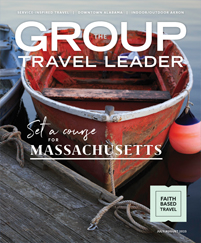
Despite the economy, two of America’s top art museums will open major new additions to their historic original buildings this year, and a third will move ahead with a massive multiyear renovation and expansion project.
A sleek new three-story wing will debut May 1 at the Virginia Museum of Fine Arts in Richmond, and the Crocker Art Museum in Sacramento, Calif., will open its contemporary new wing Oct. 10.
Meanwhile, in mid-December, the board of trustees of the Cleveland Museum of Art voted to move ahead with the second major phase of the museum’s $350 million expansion and renovation.
Glass curtain
A 40-foot-high glass-curtain wall will provide a dramatic peek from Richmond’s North Boulevard into the much-anticipated James W. and Frances G. McGlothlin Wing of the Virginia Museum of Fine Arts.
The new Indiana-limestone wing, under construction for more than four years as part of a $150 million expansion program, features two levels of new galleries for permanent collections and an expansive 12,000-square-foot lower level for temporary exhibitions.
 |
| Courtesy Virginia Museum of Fine Arts |
It also adds an art education center, expanded conservation studios and library, a museum shop and two restaurants, including a fine-dining establishment that overlooks a new outdoor sculpture garden.
Five aerial walkways that span a new three-story atrium connect the new wing with the existing Georgian-style museum building. The glass wall that provides outside views of some of the artwork and public activity inside is part of the atrium. To the north, a glass-enclosed stairwell will be lit at night, creating a softly glowing beacon.
The wing was the first major U.S. commission for London-based Rick Mather Architects, who worked in partnership with Richmond’s SMBW architectural firm.
“With the McGlothlin Wing, Rick Mather gives us a thrilling, glamorous stage from which to present special exhibitions and display more of our global collection,” museum director Alex Nyerges said in a release. “Yet he has not only designed a spectacular new museum building, he has also made anew our original building, even restoring to use such beloved beaux-arts elements as the 1936 marble grand staircase.”
An exhibition of work by Louis Comfort Tiffany will be the first major exhibition in the newly expanded museum. The Virginia Museum of Fine Arts will be the only American museum to display Tiffany: Color and Glass, which will be on display May 29-Aug. 15.
Western expansion
Officials at the Crocker Art Museum are excited about the expanded possibilities the new 125,000-square-foot building will give them. The new wing will more than triple the museum’s current size and will expand the museum’s ability to originate and present traveling exhibitions.
“We will be able to exhibit works that have rarely or never been on public view, and significantly expand our educational programming and public events,” said museum director Lial Jones.
The wing’s debut will help the Crocker, the first art museum established in the western United States, mark its 125th anniversary this year.
The classic, contemporary three-story design by the late Charles Gwathmey, who died in August, reflects and complements the historic 19th-century Art Gallery building with porches, windows and balconies.
 |
| Courtesy Crocker Museum of Art |
Visitors enter the new wing through a two-story glass-walled court adjacent to a new 7,000-square-foot open-air courtyard. The indoor and outdoor spaces on the first floor, which include a new 260-seat auditorium, will be free to the public.
New public amenities include a cafe with indoor and outdoor seating and a redesigned museum shop.
The museum will present a series of special exhibitions at its opening, with three of the four inaugural exhibitions featuring the museum’s permanent collection, much of which will be displayed for the first time.
The museum’s holdings include contemporary paintings, sculpture and multimedia works; a comprehensive collection of California art dating from the Gold Rush; master drawings; Dutch and Flemish paintings from the 16th and 17th centuries; 19th-century central and northern European paintings; a growing collection of Asian art; and one of the largest collections of international ceramics in the United States.
Final phase
The Cleveland Museum of Art, which has one of the country’s largest and most comprehensive collections with more than 40,000 objects, is in the midst of what may be one of the most ambitious expansions of an American art museum.
New York architect Rafael Viñoly drew up plans for the expansion. The plans called for demolition of the museum’s 1958 and 1983 expansions, three new wings and renovation of the neoclassical 1916 building and the modern-style 1971 addition.
Construction began in 2005. In the summer of 2008, the museum reopened renovated galleries in the 1916 building devoted to medieval armor, European Old Master paintings and decorative arts, and 19th-century American painting.
Last June, the new 139,200-square-foot East Wing, which connects the 1916 and 1971 buildings, fully opened, allowing the museum’s collections of 19th-century European sculpture, painting and decorative art; modern and contemporary art; and photography to return to public view for the first time since the museum closed its galleries in 2005.
The striped marble and granite wing, which ends in a glass-box gallery, provides panoramic views of the museum’s parklike setting in Cleveland’s University Circle area.
A new West Wing will be similar in design, and a 39,000-square-foot structure will form the north side of a large courtyard with a glass canopy covering an atrium in the center of the complex. The trustees voted to complete the exteriors and raw interior structures of the remaining wings and atrium. They will vote in June on whether to proceed with finishing the interiors and installing art in the galleries.
“I am absolutely committed to having this project proceed through to its full completion,” Al Rankin, president of the board, told The Plain Dealer.
If everything goes according to plan, the project will be completed in 2013.
Interactive transformation
The Oakland Museum of California, closed since August, will reopen May 1, when it will unveil its reconfigured history and art galleries and complete an ambitious transformation.
The renovation includes a sky-lit central staircase, a new main entrance and two innovative art galleries that were created from outside sculpture courts and feature natural lighting from clerestory windows in 20-foot walls. The museum store was enlarged and the cafe was renovated.
However, the big change is in how the museum, a combination history, art and natural science museum in downtown Oakland, interprets the story of California.
“It has a different street presence but it’s mostly the approach to the visitor that has changed,” said Elizabeth Whipple, communications manager for the museum. “It will be more participatory, more interactive. We don’t want people walking through with their hands in their pockets.”
The new galleries will include digital and interactive features to encourage visitors to experience California’s stories and voices and add their own experiences. More of the museum’s 2 million artifacts will also be on display.
The museum’s large and eclectic collection includes a pair of Gold Rush-era Levi’s, 2,500 Indian baskets, original Grateful Dead concert posters, Dorothea Lange’s archives and paintings by California artists.
The second phase of the $58 million project is a redesign of the natural sciences gallery, which is now underway and expected to be complete by 2012.
The project has been funded in part by Oakland voters’ passage of a $26.3 million bond measure in 2002.
The 40-year-old museum’s original building was acclaimed for its open-air ambience — three levels of galleries and terraces, a central courtyard with tiered gardens and outdoor walkways.











